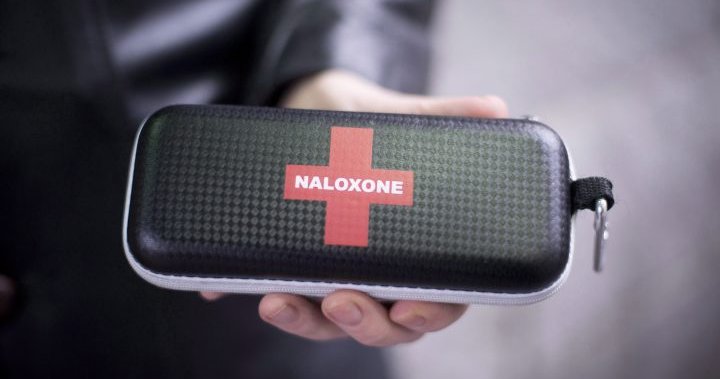People administering an overdose-reversing medication should have the choice of two versions of take-home naloxone kits across Canada, according to a panel of experts, including people who use drugs. The two versions being recommended are a nasal spray and an injectable that goes into a muscle. The guidance applies to take-home naloxone kits that are given out at various sites, such as pharmacies, community groups, and emergency departments, to anyone who could respond to an overdose. People who have used naloxone to save lives say that having the nasal spray version would ensure a faster response because some individuals may be uncomfortable with using needles. However, the nasal spray is much more expensive than the injectable version.
The guidance, published recently in the Canadian Medical Association Journal, strongly recommends that federal, provincial, and territorial programs be adapted to give individuals a choice of methods when a fast response is needed after an overdose on an illicit substance. First responders also carry naloxone, which blocks the effects of opioids, including fentanyl, heroin, morphine, and oxycodone. However, naloxone will not work on someone who has overdosed on stimulants like cocaine, MDMA (ecstasy), and Ritalin, but will not cause harm either.
The majority of kits distributed for free across Canada include injectable naloxone in ampoules or vials, along with syringes, gloves, an alcohol swab, and a “barrier shield” to place on someone’s face before administering mouth-to-mouth resuscitation. An overdose can be temporarily reversed in about three to five minutes, but responders should call 911 first in case the person stops breathing again.
The nasal spray naloxone comes in a device with two prongs that fit into each nostril for administration. It is available at no cost through a federal program to First Nations and Inuit populations when recommended by a pharmacist. However, the high cost for provinces and territories is generally the main obstacle in accessing this formulation. Ontario and Quebec offer free nasal spray naloxone at pharmacies or through locations like needle exchange programs, shelters, and public health units.
Dr. Jane Buxton, an epidemiologist and a senior author of the guidance, said having both formulations of naloxone easily accessible would be ideal. Some individuals may feel more confident using the nasal spray if they are not accustomed to needles, while others may prefer the injectable option. Furthermore, individuals with lived experience suggested that the injectable formulation can be titrated better to prevent withdrawal symptoms, which can occur due to an excess of naloxone.
It is estimated that about 80% of people who carry a naloxone kit use opioids themselves and may administer the medication to someone who has overdosed on an illicit substance. However, the number of overdose reversals is likely an underestimate because not all cases are reported.
The guidance also calls for responders to prioritize rescue breaths or mouth-to-mouth resuscitation to get oxygen into a person’s blood, rather than massaging their heart. This training is widely practiced in B.C., but it is not consistently applied across the country. The guidance was developed based on input from experts across Canada, the United Kingdom, and Australia.
Access to naloxone programs is crucial as part of a comprehensive response to the overdose crisis, which has resulted in over 37,000 deaths in Canada since 2016. In B.C. alone, 1,455 people died of a fatal overdose between January and July of this year, the highest number of deaths in that time period since the crisis began. The cost of naloxone kits has increased over the years, but it is still an essential tool for saving lives.
The guidance recommends that federal, provincial, and territorial programs be adapted to provide individuals with a choice of two versions of naloxone kits – nasal spray and injectable. The majority of kits currently distributed in Canada include the injectable version, but having both options readily available would be ideal. The nasal spray would ensure a faster response, especially for individuals who are uncomfortable with needles, while the injectable version allows for more precise dosing. It is important to prioritize access to naloxone programs as part of a comprehensive response to the overdose crisis, which has claimed the lives of over 37,000 people in Canada since 2016.
Denial of responsibility! Vigour Times is an automatic aggregator of Global media. In each content, the hyperlink to the primary source is specified. All trademarks belong to their rightful owners, and all materials to their authors. For any complaint, please reach us at – [email protected]. We will take necessary action within 24 hours.


